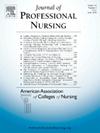不只是一个清单:道德,以病人为中心的十项权利在北欧护理教育的使用
IF 2.9
3区 医学
Q1 NURSING
引用次数: 0
摘要
药物管理错误频繁发生,突出了安全用药实践在护理教育中的重要性。制定了各种核对表,如“五项权利”或“九项权利”,以支持安全用药管理的实施。然而,单凭清单还不足以保证用药安全。北欧药物教育工作者合作组织确定需要一个更全面、更有教育基础的框架,并制定了药物管理的“十项权利”。这些权利旨在通过提供结构化但灵活的药物管理指南,支持安全、道德和以患者为中心的护理实践。本文概述了“十项权利”在药物管理中的发展,“十项权利”是如何诞生的,以及我们如何将这些权利视为一种可能性,可以澄清药物管理的复杂性,同时为医疗保健专业人员提供处理药物的结构。在整篇文章中,提出了将“十项权利”纳入北欧国家护理课程的建议,以加强用药安全和支持专业问责制。本文章由计算机程序翻译,如有差异,请以英文原文为准。
Not just a checklist: Ethical, patient-centred use of the ten rights in Nordic nursing education
Medication administration errors occur frequently, highlighting the importance of safe medication practices in nursing education. Various checklists, such as “Five rights” or “Nine rights”, have been developed to support the implementation of safe medication administration. However, the lists alone are not enough to guarantee medication safety. The Nordic Medication Educators' Collaboration identified the need for a more comprehensive and educationally grounded framework and developed “The Ten Rights” in medication administration. These rights aim to support safe, ethical, and patient-centred nursing practice by providing a structured yet flexible guide to medication administration. This article outlines the development of “The Ten Rights” in Medication Administration, how “The Ten Rights” were born, and how we see these rights as a possibility for clarifying the complexity of medication administration while providing a structure for healthcare professionals handling medications. Throughout the article, recommendations are presented for integrating “The Ten Rights” into nursing curricula across the Nordic countries to enhance medication safety and support professional accountability.
求助全文
通过发布文献求助,成功后即可免费获取论文全文。
去求助
来源期刊
CiteScore
4.80
自引率
8.00%
发文量
153
审稿时长
52 days
期刊介绍:
The Journal will accept articles that focus on baccalaureate and higher degree nursing education, educational research, policy related to education, and education and practice partnerships. Reports of original work, research, reviews, insightful descriptions, and policy papers focusing on baccalaureate and graduate nursing education will be published.

 求助内容:
求助内容: 应助结果提醒方式:
应助结果提醒方式:


